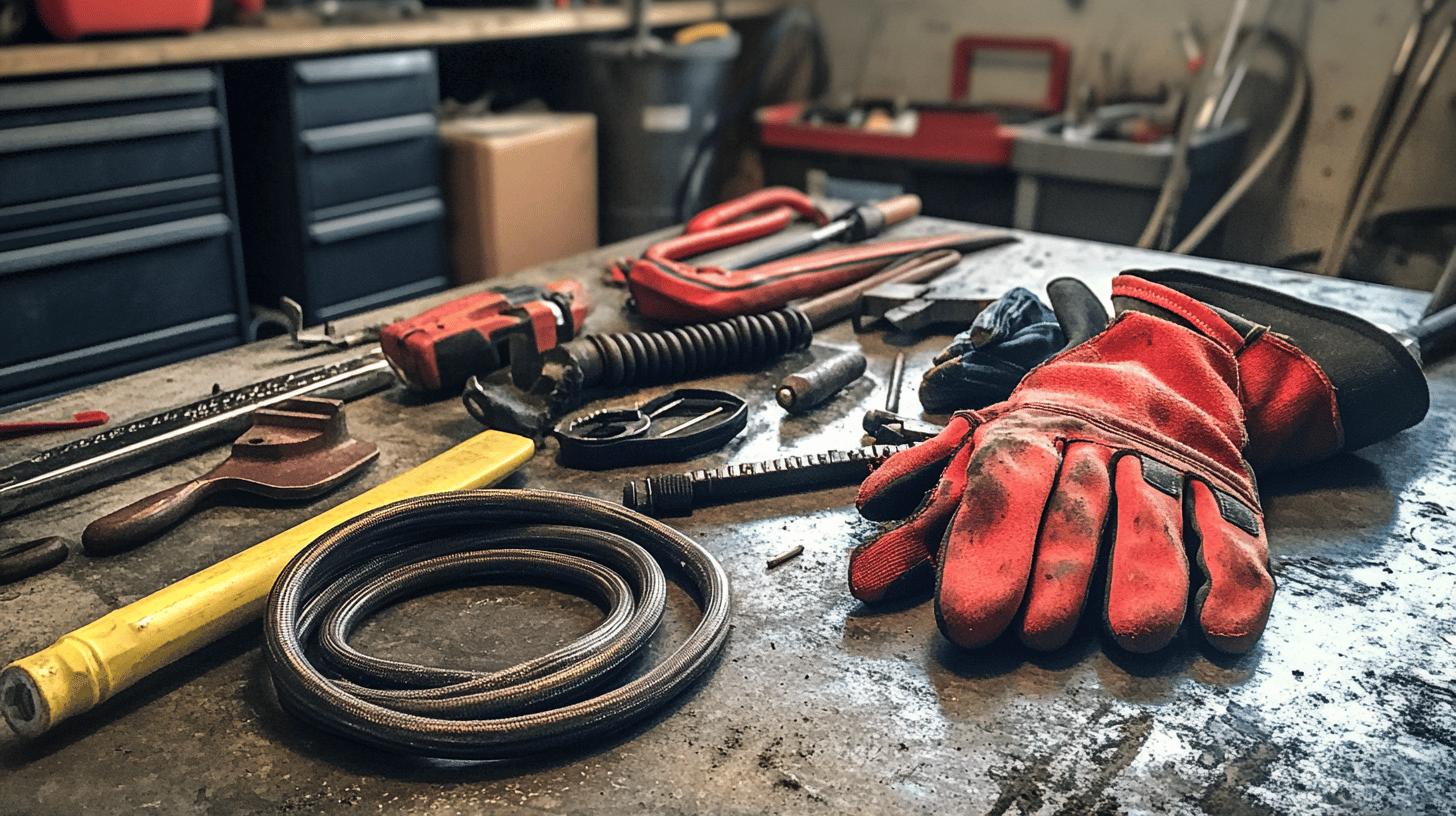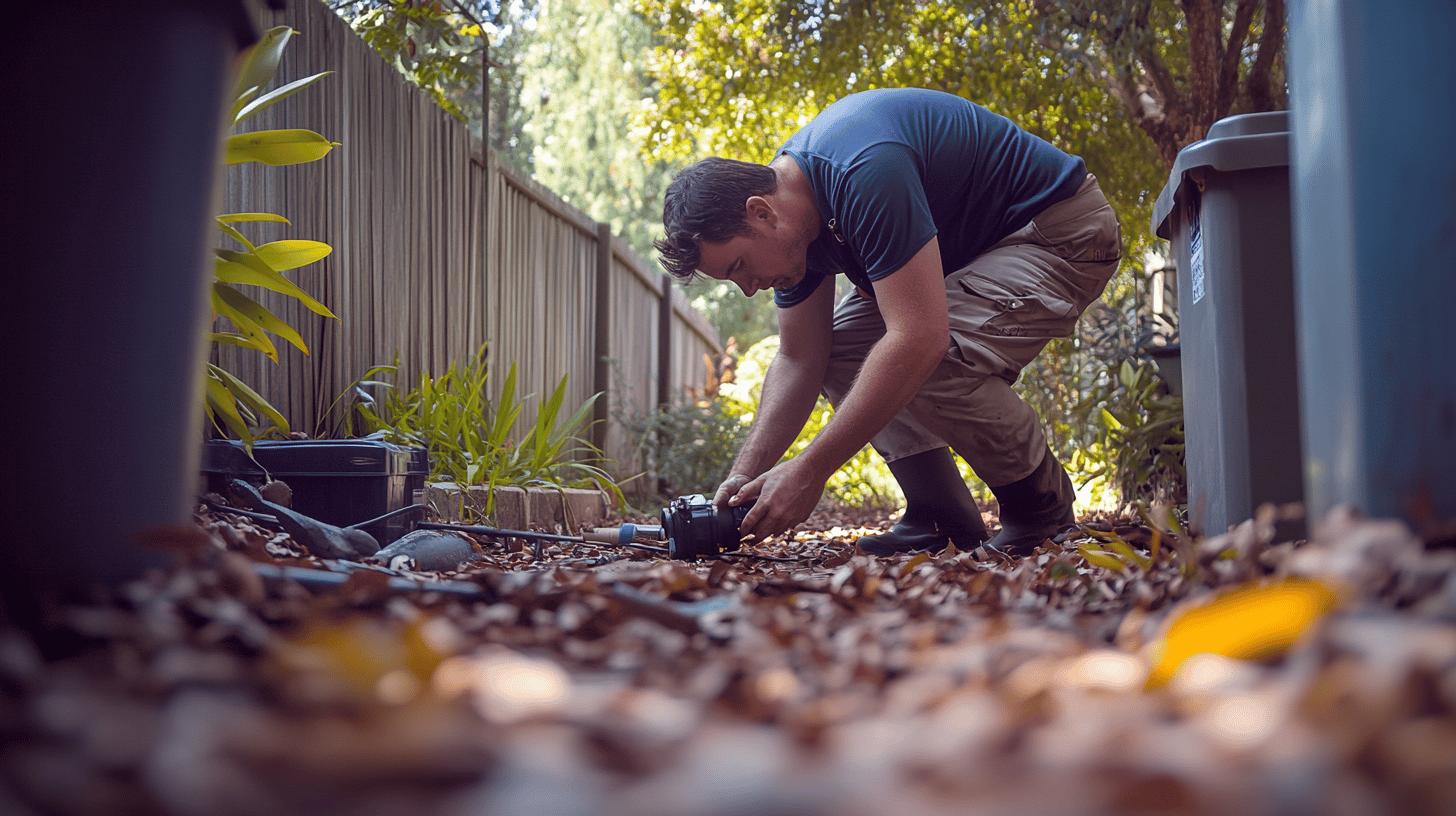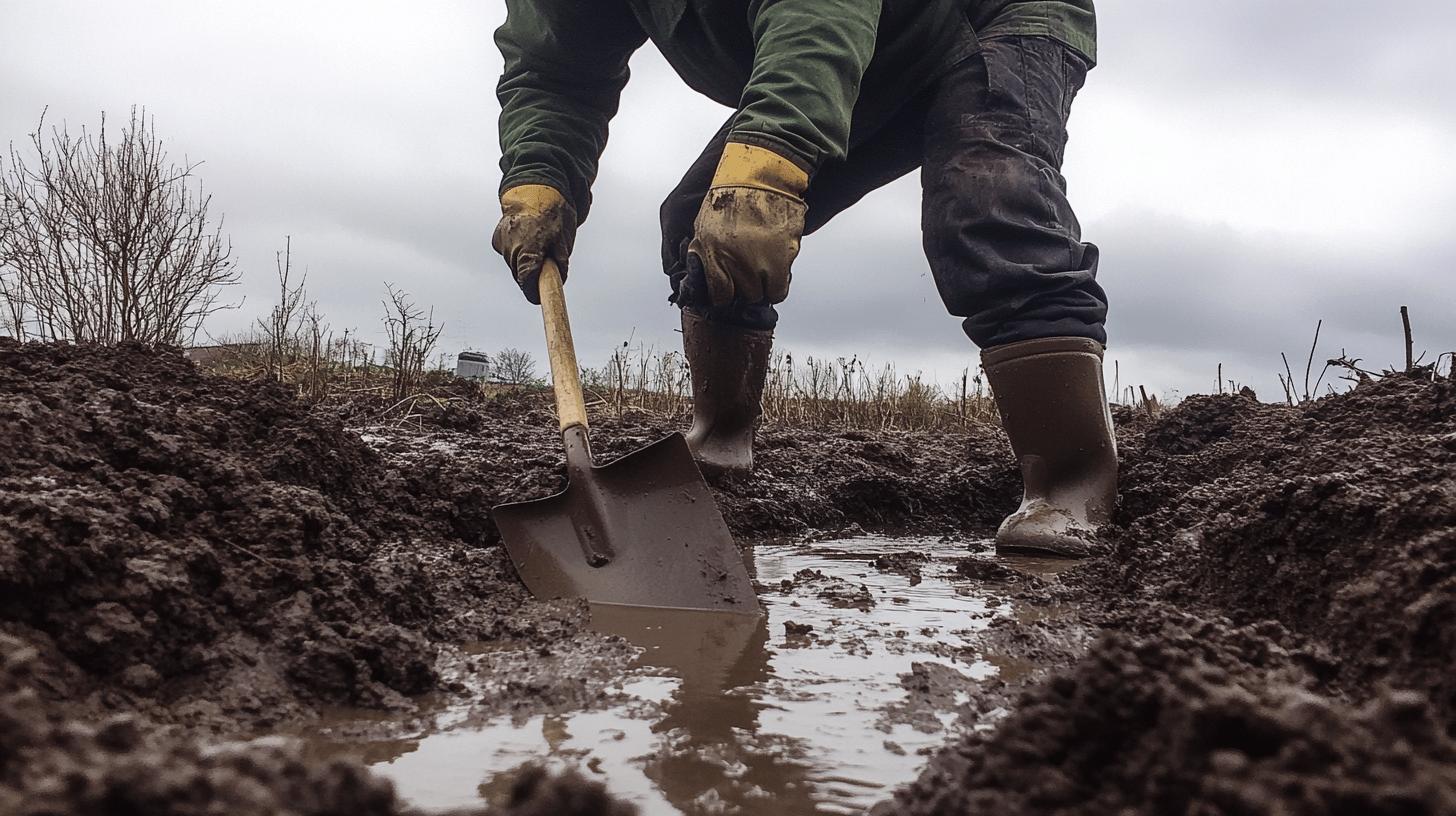TL;DR:
- Footing drains divert water away from foundations, preventing water damage and soil erosion.
- Neglect can lead to basement flooding, foundation cracks, mold, and costly repairs.
- Tools for cleaning include:
- Drain Snake: Breaks clogs
- Pressure Washer: Removes debris
- Protective Gear: Gloves & goggles
- Steps for cleaning:
- Gather tools and safety gear
- Locate drains
- Inspect for clogs
- Use drain snake
- Flush with garden hose
- Pressure wash
- Test flow
- Signs of trouble include water pooling, slow drainage, and dampness.
- Perform seasonal inspections and hire professionals annually for maintenance.
Is your home’s foundation truly protected from water damage? Footing drains, often overlooked, play a crucial role in directing water away from your home’s foundation. Neglecting these drains can lead to serious structural issues and expensive repairs. Regular maintenance not only prevents water damage but also helps safeguard your investment. In this article, we’ll explore effective tips to clean and maintain footing drains, ensuring they work properly to protect your home. Let’s dive in and learn how proper upkeep of these drains can be your home’s first line of defense against water-related problems.
Understanding Footing Drains and Their Importance
Footing drains are essential for your home’s drainage system as they direct water away from the foundation. This prevents water damage and soil erosion, which could compromise your home’s structural integrity. By efficiently guiding water away, footing drains safeguard your foundation, helping keep your home stable and long-lasting.
Ignoring footing drain maintenance can cause several issues:
- Water entering basements or crawl spaces
- Foundation cracking or movement
- Mold and mildew from constant moisture
- Soil erosion near the foundation
- Expensive repairs due to property damage
Regular checks and professional inspections of footing drains are crucial for spotting issues early. Catching problems early allows for quick repairs, reducing the risk of significant water damage. Expert plumbers have the tools and expertise to assess drain conditions accurately. Prioritizing inspections helps protect your foundation and prevents expensive repairs down the line.
Essential Tools and Materials for Cleaning Footing Drains

To clean footing drains effectively, you’ll need tools like a drain snake and a pressure washer to clear out debris and maintain smooth water flow. Safety gear, like gloves and goggles, is important to protect yourself during the process. If you’re tackling the job yourself, renting equipment can be more cost-effective than buying, especially for tools you’ll only use occasionally.
|Tool/Material|Description|
|————-|———–|
|Drain Snake|Breaks up and removes drain pipe clogs.|
|Pressure Washer|Removes debris using high-pressure water.|
|Protective Gear|Includes gloves and goggles for safety.|
|Sewer Jetter|A nozzle for pressure washers to cut tough clogs.|
|Garden Hose|Flushes out light debris and checks flow.|
For stubborn clogs or complicated systems, hiring professionals is often the best option. They have the right tools and expertise to tackle tough problems without causing damage. Using pros ensures a thorough cleaning and helps identify any hidden issues, potentially saving you from expensive repairs down the line.
Step-by-Step Guide to Cleaning Footing Drains
Cleaning footing drains is crucial for your home’s drainage. Follow a step-by-step approach to handle blockages and ensure drain efficiency:
-
Gather Tools and Safety Gear: Collect a drain snake, pressure washer, gloves, and goggles for effective and safe cleaning.
-
Locate and Access Drains: Find the drain openings around your home. Clear visible debris to ensure easy access.
-
Inspect for Blockages: Use a flashlight to check for clogs. Spotting blockages early helps focus cleaning efforts.
-
Use a Drain Snake: Insert the snake into the pipe to break up tough clogs, especially from roots or compacted debris.
-
Flush with a Garden Hose: Use the hose to clear loosened debris, ensuring restored water flow.
-
Use a Pressure Washer: For deep cleaning, use high-pressure water to dislodge stubborn debris.
- Inspect and Test Flow: Check for damage like cracks, and run water to verify successful cleaning.
Safety is crucial when cleaning footing drains. Always wear gloves and goggles to protect yourself from debris and water splashes. If clogs persist or you notice any damage, it’s best to consult a professional plumber. They can handle more complicated issues without causing further damage to your system.
Troubleshooting Common Issues with Footing Drains

Catching footing drain clogs early can save you from bigger problems down the line. Look out for signs like water pooling near the foundation, slow yard drainage, or dampness in the basement. These could all indicate a clog. Regular checks help catch issues before they lead to major damage.
Common culprits of footing drain issues include debris buildup, tree roots blocking the pipes, and damage to old pipes. Debris can obstruct water flow, while roots can create serious blockages. Older pipes might crack, making drainage harder.
For a thorough check, use tools like video inspections, which provide a clear view of the pipes and help pinpoint any blockages or damage. If the issues keep happening, it’s best to consult a professional plumber for a full assessment and repairs.
Routine Maintenance Tips for Long-term Footing Drain Efficiency
Regular maintenance of your footing drains is key to keeping them working properly. By sticking to a cleaning schedule, you can prevent clogs, keep water flowing smoothly, and extend the life of your drains, which helps avoid costly repairs. Consistent upkeep also protects your foundation from water damage. Seasonal checks ensure your drains stay in top shape year-round.
- Perform seasonal inspections to clear drain debris.
- Remove leaves regularly to prevent clogs.
- Keep outlets clear for smooth flow.
- Periodically test flow by running water.
- Monitor pipes and surrounding soil for erosion or damage.
It’s a good idea to have professionals inspect your footing drains once a year. They can identify and fix issues that may not be obvious, ensuring your drains are working properly. Regular expert care helps protect your home from potential water damage.
Final Words
Understanding how to clean footing drains is key to protecting your home’s foundation. These drains play a vital role in redirecting water, preventing erosion and structural damage. Keeping them clear with the right tools and regular inspections ensures they stay effective and last longer.
Homeowners can handle basic debris removal with the right equipment, but it’s important to know when to call in professionals. Regular maintenance helps save on costly repairs and ensures a dry, safe environment around your foundation.
FAQ
How do you clean footing drains outside?
To clean footing drains outside, use a drain snake or pressure washer to remove debris. Flush the pipes with water to clear any remaining obstructions, and inspect for any signs of damage.
How can you unclog a foundation drain pipe?
Unclogging a foundation drain pipe involves using a sewer jetter to remove blockages. Alternatively, a drain snake can be used for less severe clogs. Consider professional help if these methods do not work.
What is a sewer jetter?
A sewer jetter is a tool that uses high-pressure water to clear clogs and debris from pipes. It’s particularly effective in unclogging drains that are heavily blocked.
What is a French drain, and how does it work?
A French drain is a trench filled with gravel or rock containing a perforated pipe. It redirects surface water and groundwater away from an area, helping prevent water damage and flooding.
How can you tell if a footer drain is clogged?
You can tell if a footer drain is clogged by checking for water pooling near the foundation, slow drainage, or unusual smells. It’s advisable to inspect the drains regularly to catch issues early.
How do you check footing drains?
To check footing drains, look for signs of water pooling, use a drain camera for inspection, or hire a professional for a thorough evaluation to ensure they are functioning properly.
How do you unclog an underground outdoor drainage pipe?
To unclog an underground outdoor drainage pipe, consider using a sewer jetter or drain snake to remove stubborn clogs. For persistent blockages, professional services might be more effective.

